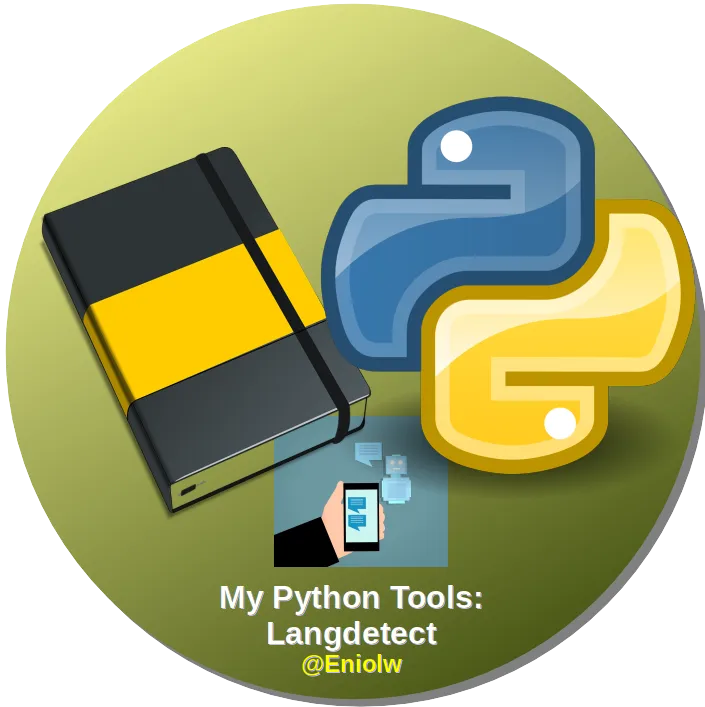
My Python Tools: #1 Langdetect
By Enio...
I am pleased to introduce you to my My Python Tools series, focused on addressing different programming tools related to the Python programming language. These will consist of snippets, scripts, libraries, frameworks, application programs, among others, and in which we address content in a manner accessible to both specialist and non-specialist audiences. Without further ado, let's review this edition's toolkit.
Resource name
Langdetect
Understanding a few concepts
Content served through web documents often incorporates metadata that allows applications to recognize the dominant natural language present in it, and the same is true for many REST APIs, which specify the language as context information in the data served. Whether we are on the backend or fronend, this will not always be the case and, depending on our functionality, we will need to determine at runtime the language(s) present in a string depending solely on that string.
There are a few approaches to recognize languages that can be easily implementable, but when it comes to fast implementation, it is often not a universal solution but rather limited. For example, I have been able to implement the approach based on the recognition of common words or tokens.
These are usually made up almost entirely of prepositions, articles, pronouns, etc. Thus, to recognize whether a text is written in English, it may be sufficient to look for the words the, and, of, to, a, in, it, you, he, for, among others. The key would then be to measure and compare the frequency with which these words appear.
If we want a more robust and more generalizable solution, then we will have to apply an approach based on n-grams. An n-gram is a substring of characters extracted from a collection of words. For example, Wes and Str are n-grams of 3 characters in length. They are present in both English and Spanish, but their frequency in English words far exceeds their frequency in Spanish words. For that reason, those N-grams receive a prior probability or weight in each language.
In the end, the languages present will be detected through a probabilistic approach by the presence and absence of these N-grams in a given text. These solutions are also considered a classification problem within natural language processing.
Of course, this is not something that is implemented in a 10-line script. Just having the weights of the n-grams per language alone would certainly take up several files, not to mention that the weights must be realistic. You have to use libraries that have already done this work. That is the case of Python langdetect.
Description
The Python langdetect library allows to recognize the language or languages present in a given text. Currently it can recognize among 55 languages, these are: Afrikaans, Albanian, Arabic, Bengali, Bulgarian, Catalan, Chinese, Croatian, Czech, Danish, Dutch, English, Estonian, Finnish, French, German, Greek, Gujarati, Hebrew, Hindi, Hungarian, Indonesian, Italian, Japanese, Kannada, Korean, Latvian, Lithuanian, Macedonian, Malayalam, Marathi, Nepali, Norwegian, Persian, Polish, Portuguese, Punjabi, Romanian, Russian, Slovak, Slovenian, Somali, Spanish, Swahili, Swedish, Tagalog, Taiwanese-Mandarin, Tamil, Telugu, Thai, Turkish, Ukrainian, Urdu, Vietnamese and Welsh.
The algorithm for this library is originally from Nakatani Shuyo and Google, is open source and available on GitHub. An extensive presentation of how the algorithm works is available in slideshares. The version presented here (langdetect) is a Python port of the same algorithm.
Some features
- Supports up to 55 languages
- Detect language using naive Bayesian filter
- Its developers claim that it can achieve 99% detection accuracy.
- It is not deterministic, i.e., given the same input, the accuracy of the results may change with each run.
Website or repository
https://pypi.org/project/langdetect/<Example
The following script demonstrates the library by detecting the languages contained in a Hive post of mine. First the post is downloaded using beem. Then you clean up the input data a bit by removing the HTML code using BeautifulSoup, although this step may be unnecessary. Finally we run the functions detect which returns the most likely language code and detect_langs which returns the most likely languages present.
import langdetect
from beem.comment import Comment
from bs4 import BeautifulSoup
post = Comment("eniolw/chess-puzzle-of-the-day-jan-26-2023--problema-de-ajedrez-del-da-26-en-2023-20230127t060400z")
soup = BeautifulSoup(post.body, "lxml")
text = soup.get_text()
language = langdetect.detect(text)
languages = langdetect.detect_langs(text)
print(language)
print(languages)
In the output it can be seen that the library estimates that English is the most likely language and that the post does indeed have texts in English and Spanish. It indicates the language following the ISO 639-1 codes, so you may have to familiarize yourself with them. You can see how it includes the calculated probabilities. If you run the script again you can see that the results will vary a little.
In summary
The next time you use Google Translator with a text whose language you don't know so you ask it to detect the language automatically, remember that behind the scenes that functionality is most likely the same as the one shown here, with a different implementation of course. The langdetect library is quite minimalistic, but effective, and will allow you to solve more than one problem.


